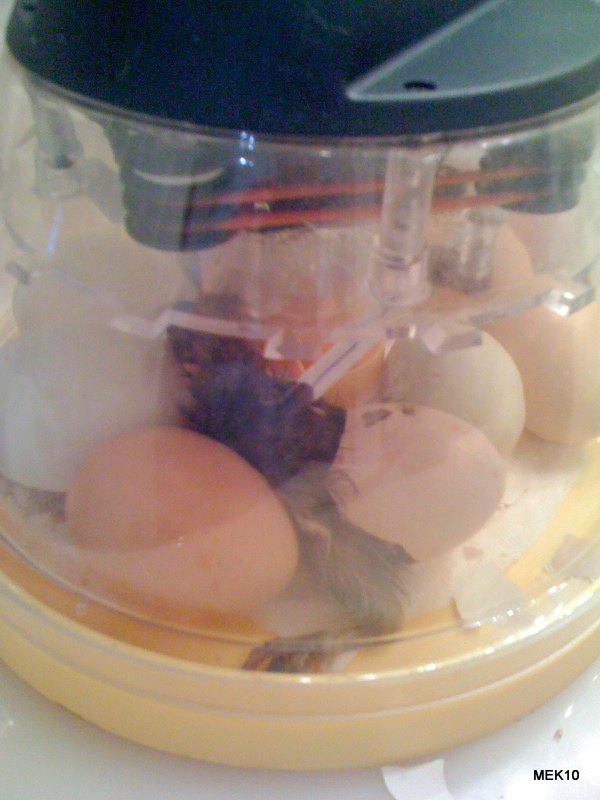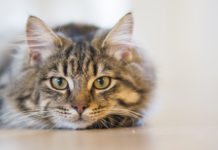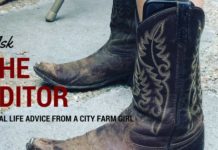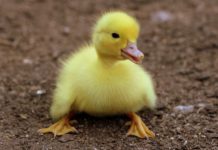There is a saying that a true Southerner will drink iced tea in a blizzard. Like many axioms, this one is rarely tested because, really, when are we ever going to have a blizzard? Well, if the winter of 2009-2010 is any indication it could happen to thin-blooded Southerners or anyone across the country as all regions experienced record-breaking low temperatures and storms this past year. Those who are able to travel briskly from climate-controlled home, to climate-controlled car, to climate-controlled work place may be scarcely aware of Mother Nature raging outside the door. Those of us who choose to live closer to nature and live a homesteaders life, whether in a rural or urban setting, do not have the luxury of hibernating the winter away. Our farm family needs just as much care and attention in winter (and, in some cases, perhaps more so) as they do the remainder of the year and there are some particular issues to be aware of and prepared for depending on your geographic location and the make-up of your farm family. The following information is not intended to be all inclusive but should prove helpful in getting a jump-start on your severe winter weather preparation.
CHICKENS: Your feathered friends stay warm by fluffing up their feathers to trap warm air next to their skin. I’m told this is the reason humans get goose bumps when we’re cold but most of us have evolved to have too little body hair for this to be an effective method in maintaining warmth. (Maybe those men who have their entire bodies waxed should reconsider!) A cold draft blowing through your chicken coop makes this mechanism ineffective and can cause your birds to become cold. Eliminate drafts in your coop by checking it on a windy day and observing how much air flows through. This is not to say you want your coop to be air-tight. Too little air circulation, even in winter, can lead to mold growth and dampness which can cause respiratory ailments. Essentially, you want the coop to be dry and airy but have no direct drafts on the chickens particularly where they roost or nest. Our chickens live in an extra stall in our barn with an attached electric net fenced yard for use when they are not free-ranging. One modification we make in winter is to place a length of foam pipe insulation in the crack between the upper and lower Dutch stall doors and close the window and adjacent stall doors at night. There is still plenty of ventilation but no direct breeze blowing over the birds.
Hens sleep with their heads tucked under their wings to stay warm but, generally speaking, a rooster does not. As a result, a rooster’s comb can become frostbitten in extreme cold. One method of protecting the comb (on roosters or hens) is to coat it with an oil-based lotion or nut-butter salve. Many people recommend using petroleum jelly for this purpose but others prefer not to use these products on themselves or their animals. At any rate, ensure whatever product you use is not water-based (like aloe vera gel) as they have a high water content and can freeze negating your efforts. Use caution with using nut butters as some birds may find them tasty and start pecking at each others combs. I have used vegetable oil, mineral oil, and shea butter with no problems noted.
Heat lamps, standard light bulbs, and small electric heaters installed above the roost are often used on the coldest of nights to keep chickens comfortable. With any such device, ensure you are following the manufacturer’s instructions to the letter to prevent fires. We mount two heat lamps on sturdy posts attached to the roost at a height of about 4 feet from the birds. We also use a thermometer to ensure the temperature is not too high on the birds themselves. Essentially, you do not want the coop to be warm by human standards, just warm enough to take the chill out of the air. To this end, a thermostat set to turn the heat or light on when the temperature falls below 35 degrees and off when it reaches 35 degrees may be most helpful. If you choose to use supplemental heat, be aware that you may condition your birds to become used to a warm temperature. This becomes a problem if you experience a power outage and now cannot supply the heat to which your chickens have become accostumed and illness can result. We use the heat lamps only on the coldest of nights and try to have them on for as few hours as possible just to cover the chilliest hours. This is not a problem for me as I get up very early but the Mr. can sometimes grumble a bit when he has to tromp out in the cold to turn on the lights late at night. He grumbles good-naturedly, of course, as he often worries about the chickens even more than I do!
Chickens’ ability to find natural food sources becomes more difficult in winter. Bugs burrow too deep in the ground to be reached, grass and weeds are brown and unappetizing, and snow may cover available sources of small stones and grit. To combat this, provide your chickens with grit purchased from your local feed store. I prefer to use red pigeon grit which has added minerals chickens otherwise may find in the soil. You can also treat your chickens to a container of mealworms, earthworms, or crickets purchased from a bait and tackle shop or your local pet store which sells supplies for lizards. Additionally, you can use your green thumb even in winter to your chickens ‘ advantage. Find a few plastic or wood (pottery may freeze and break) rectangular planter or window-type boxes. Fill them with soil (organic, please!) and plant them with rye or wheat grass seeds. Cover the soil with a layer of chicken wire. Water and put in a dark place for a few days until sprouts start to shoot up through the wire. Transfer to a warm and sunny spot until the grass is a couple of inches tall. Then let your chickens enjoy the fresh buffet! The wire will keep them from scratching the soil and grass to pieces. It may be a good idea to have a few so you can rotate them and have the chickens on one while the others are recovering. Heated or insulated waterers are also helpful in the coldest of climates but I have found if I keep the drafts out of the coop and the temperature above freezing, I do not have to worry about the water. I will, however, refill the waterers with warm water to encourage them to drink. I do not want to drink ice cold water while outdoors in the winter and I don’t think they do, either. This is an easy way to ensure dehydration does not become a problem on your homestead.
GOATS: My two Nubians, Gidget and Penut, never cease to amaze me. As you may have read in my post on summer care, these two not only tolerate hot weather but seem to luxuriate in the sun’s rays. Perhaps, it is their African ancestry but that does not explain why they seem to do just about as well in the cold. They grow thick and fuzzy coats and are often out in the chilly sunshine munching contentedly on hay. This is all null and void, however, when a strong wind or, heaven forrbid, cold rain develops. They HATE getting wet and will stay tucked inside their house all day literally not setting a hoof outside during such weather. In these cases, we ensure their house is filled with extra pine shavings, they have extra hay to eat and warm their water as needed. They snuggle up together and seem to have no trouble. I did notice last year that Gidget looked a little peaked. Her gums were a bit pale and she seemed to have little energy. I brought the two of them into another stall in the barn to keep them extra warm, wormed her an extra time, and dosed her with Goat Drench (which is loaded with iron and other minerals to help with anemia.) She was back to her old self very quickly so I was glad to have taken these extra steps to help her handle the extreme cold. Being aware and knowing your animals typical behavior does pay off when the weather can take a toll on their usual good health.
HORSES: Care for horses during the winter depends very much on the type of work they do. Horses who are ridden or worked during cold weather must have their winter coats taken in to consideration. Horses naturally grow a thick undercoat to protect them from rain and cold but it is not the cold itself that stimulates the coat’s growth. The shortening daylight hours are actually what trigger the brain to begin producing more hair. If a horse is taking the winter off (as may be true for those used for farm work after the harvest is over) a natural winter coat undisturbed by man is the best way to protect them from the elements when combined with adequate shelter. If a horse will be worked, care must be taken to ensure they do not overheat under all that hair. If a horse sweats and cannot dry off before the evening cool weather sets in, they are at risk of getting a chill. As a result, those who choose to work their horses throughout the winter will have to lessen the growth of hair. This is often accomplished by leaving lights on in the barn until 10 or 11 o’clock at night (artificially lengthening the daylight) combined with a series of different weight blankets worn to negate the need for further hair growth. An additional step would be to clip the horse’s body hair to allow the horse to be worked without the build-up of sweat and the associated drying-off concerns. Horses, like other animals, will be less likely to drink ice cold water so the use of heated or insulated tanks or portable water heaters is very common for ensuring adequate water consumption. As with all of my animals, pouring hot water into the troughs in the early morning is sufficient for my climate. Extra hay will allow your horses to continue their natural non-stop grazing behavior even when grass is difficult to find. This constant eating and digesting goes a long way toward keeping them warm and should be encouraged.
In areas where snow is an issue, cleaning your horses hooves daily is a must. Snow can pak itself into the concave surface of the hoof causing the horse to have difficulty walking with a natural gait resulting in possible bowed tendons or other injuries. I have known people to spray non-stick cooking spray on their horse’s feet to prevent snow from balling up inside with good results but a daily visit from the hoof pick will still be required.
Regardless of which animals inhabit your homestead, many basic principles will help you help them thrive this winter. Dry, draft-free housing, plentiful food for grazing throughout the day, water of an inviting temperature, an educated and observant human willing to makes changes to the routine as needed are all practices that will help your animals remain happy and healthy till next spring. Of course, extra hugs from those fuzzy or feathered friends will keep everyone a little warmer and happier, too.












What a lot of great information and helpful tips for keeping critters safe, warm and dry in winter. Thanks for sharing and look forward to more from you!
Thanks, Anais!
Thank you for the thoughtful and kind-hearted article Dawn.
We keep a small fenced pasture available for our hens year-round adjacent to the hen yard. It is sowed with winter rye, tall Kentucky fescue (which can’t be clawed up easily due to extra-deep roots) and clover. The pasture rarely needs mowing and stays green even in our Pennsylvania winters. During the warm growing season, the hens are allowed longer periods of time on the pasture, with shorter periods offered in winter (usually on clean-out days) when the land needs more rest to avoid being over-grazed.
As for protecting our hens from the cold, we find an ordinary unheated hen-house to be adequate if we include only northern-bred layers in our flock. They overwinter with ease, but would probably become heat-stressed and stop laying on a deep-South farm. Ours lay all winter once the autumn molt is finished, and being more dependent upon access to daylight than to heat. The straw is changed as soon as it becomes damp (about every 10 days), providing regular winter mulch for the gardens and keeping the hen-house free from ammonia gas. Nest boxes are stuffed with alfalfa to support active layers with extra nutrients.
As far as easy access to worms, we keep a litter compost heap outside the hen yard directly on the ground in one corner of the garden. The pile never has an odor, as it is exposed to rain, sun, air, and earthworms below. The straw-soil there remains too soft to walk on, making it easy to turn over for an abundance of worms even when the rest of the ground becomes hard.
Thanks again for your loving example to your animals!
Thanks for the comments and information, Lori. I can only imagine the challenge of keeping a homestead in PA since I struggle with our NC winters. I appreciate your input! Merry Christmas!